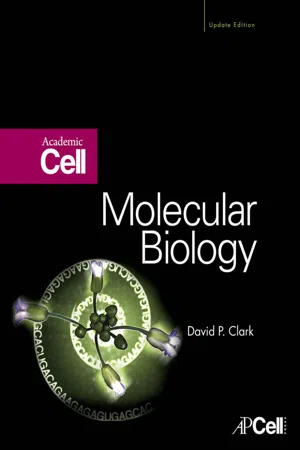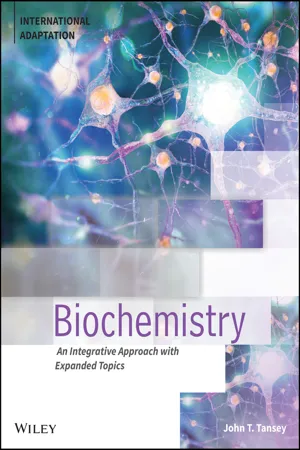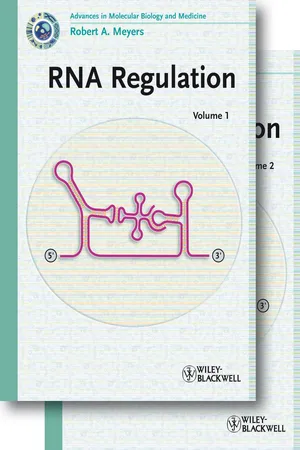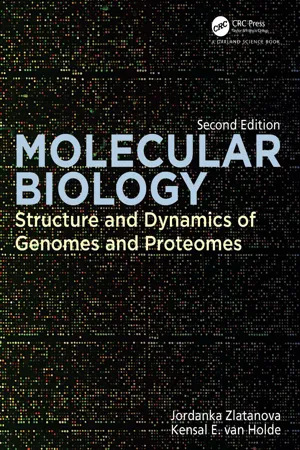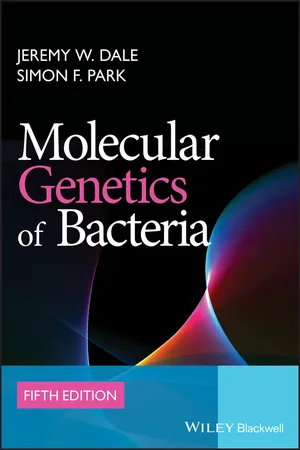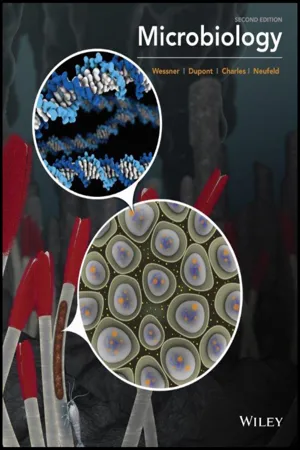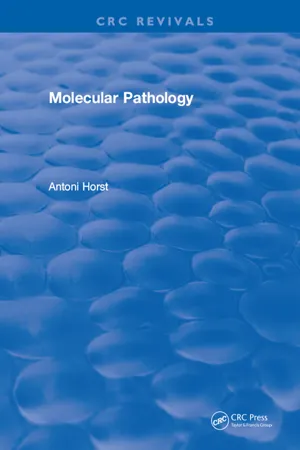Biological Sciences
Operon Theory
The operon theory is a concept in genetics that explains how genes are regulated in prokaryotic cells. It proposes that a group of functionally related genes can be regulated together as a single unit, with a common promoter and operator region. This allows for coordinated control of gene expression in response to environmental changes.
Written by Perlego with AI-assistance
Related key terms
Related key terms
1 of 4
Related key terms
1 of 3
9 Key excerpts on "Operon Theory"
- eBook - ePub
- David P. Clark(Author)
- 2009(Publication Date)
- Academic Cell(Publisher)
polycistronic mRNA is only found in prokaryotes. The genes in an operon are often related functionally, so it makes good sense to regulate them as a group. For example, an operon may encode several enzymes that take part in the same biochemical pathway. Some operons have only a single gene; most have two to half a dozen and a few have more. Despite having more genes than bacteria, higher organisms do not have operons; their genes are transcribed one at a time.Figure 9.10 Transcription of an Operon to Give Polycistronic mRNA Several structural genes are located side by side and are transcribed into a single length of mRNA. During translation, several proteins, usually functionally related, are made using the single mRNA.Operons are clusters of genes that are controlled as a unit.The operon model for regulating bacterial genes was first proposed by François Jacob and Jaques Monod, using the negatively regulated lactose genes of E. coli as an example. Since then a vast number of bacterial genes, including those with activators as well as those with repressors, have been fitted to this model or variants of it. The lactose operon, like many bacterial operons, is controlled at two levels. Specific regulation refers to regulation in response to factors specific for a particular operon, in this case the availability of lactose. Global regulation , discussed later, is regulation in response to more general conditions, such as the overall carbon and energy supply of the cell.operon A cluster of prokaryotic genes that are transcribed together to give a single mRNA (i.e. polycistronic mRNA) polycistronic mRNA mRNA that carries several structural genes or cistrons specific regulation Regulation that applies to a single gene or operon or to a very small number of related genes The lactose or lac operon consists of three structural genes, lacZ, lacY , and lacA , together with an upstream regulatory region (Fig. 9.11 ). The lacZ structural gene encodes β-galactosidase , the enzyme that degrades lactose. The lacY gene encodes lactose permease (a transport protein) and lacA encodes lactose acetylase, whose role is not known (it is not needed for growth on lactose by E. coli) .The lac operon is regulated by the LacI repressor protein, which is encoded by the lacI gene. This lies upstream of lacZYA - No longer available |Learn more
- Mary Wuerth(Author)
- 2023(Publication Date)
- Barrons Educational Services(Publisher)
Figure 17.1 .Figure 17.1 The OperonPromoters are noncoding regulatory sequences that serve as binding sites for RNA polymerase. Operators are noncoding regulatory sequences that serve as binding sites for repressor proteins (a type of regulatory protein). Structural genes are coding sequences that contain the genetic code for the proteins required to perform the function of the operon.The two types of prokaryotic operons you need to understand for the AP Biology exam are inducible operons and repressible operons.When determining whether an operon is turned “on” or “off,” consider what would be most advantageous to the bacteria in its environment. If an operon’s function is to digest a molecule, it is advantageous to the bacteria to turn “off” the operon if the molecule is not present and to turn “on” the operon if the molecule is present. If an operon’s function is to synthesize a molecule, it is advantageous to turn “on” the operon if the molecule is not present but advantageous to turn “off” the operon if the molecule is present.Inducible Operons
Inducible operons usually have a catabolic function (digesting molecules) and are turned off unless the appropriate inducer molecule is present. The repressor protein in an inducible operon binds to the operator sequence, blocking transcription of the operon by RNA polymerase. However, when an inducer molecule is present, the inducer binds to the repressor protein, changing its shape so that it can no longer bind to the operator sequence. This allows RNA polymerase to begin transcribing the operon.The classic example of an inducible operon is the lac operon, as shown in Figure 17.2 . The function of the lac operon is to produce the proteins required to digest the sugar lactose. If no lactose is present, the lac repressor protein will bind to the operator, blocking transcription of the operon by RNA polymerase. Lactose serves as the inducer molecule for the lac operon. When lactose is present, it binds to the lac - eBook - ePub
Biochemistry
An Integrative Approach with Expanded Topics
- John T. Tansey(Author)
- 2022(Publication Date)
- Wiley(Publisher)
When bacteria face various environmental challenges (for example, changes in nutrient levels, osmolarity, or temperature), they can respond by synthesizing different sigma factors, and as many as 14 such factors have been identified. For example, when presented with increased temperature in its environment, the cell produces s32, a sigma factor with a molecular weight of 32 kDa. This factor binds to the heat shock promoter sequences, activating transcription in these genes, which in turn produce proteins that the cell uses to respond to this challenge. Sigma factors are involved in the pathogenicity, or virulence, of bacteria and can globally influence the genes being expressed. Particular sigma factors can upregulate the genes involved in resistance to stressful environments, such as heat, low pH, or the high concentrations of hydrogen peroxide sometimes seen in abscessed tissue. For example, a common problem associated with cystic fibrosis is bacterial infections that produce significant amounts of mucus. A specific sigma factor has been found that upregulates genes involved in producing secreted polysaccharides (alginate) associated with this mucus.17.2.2 Operons regulate small groups of genes that code for proteins with a common purposeOften, the cell needs to respond to a challenge that requires a more focused approach than simply changing the types of sigma factors synthesized. One such instance would be a shift in the availability of different food sources. An organism would be at a disadvantage if it were forced to produce all the enzymes needed to metabolize a diverse array of carbohydrates at all times or if it were unable to switch from one carbon source to another (for example, from glucose to lactose). Operons provide one way in which prokaryotes can respond to such a challenge.An operon is an organization of genes that code for proteins involved in a common purpose, such as the metabolism of a specific carbohydrate or amino acid (Figure 17.2 ). Within an operon, the promoter region serves as a control site to regulate the synthesis of a single mRNA that codes for all the genes for proteins involved in the specific metabolic pathway. The promoter region binds to RNA polymerase. The operator region binds to repressor proteins encoded by genes upstream of the promoter to regulate transcription of the structural genes that follow in the message. The operon allows the regulation (either positive or negative) of related genes to be accomplished by a single control region, rather than multiple control sequences regulating multiple independent genes. The end result is a single polycistronic message , that is, a message that contains multiple start and stop sites and codes for more than one protein. Operons also have regions upstream of the control sites that code for a regulatory protein (the repressor). Often, these proteins will bind a metabolite involved in the pathway specific to the operon and regulate the expression of the operon structural genes either positively or negatively. By binding different regulatory elements, genes can be either up- or downregulated, as appropriate. The remainder of this section examines two examples of operons: the lac operon and the trp - eBook - ePub
- Robert A. Meyers(Author)
- 2014(Publication Date)
- Wiley-Blackwell(Publisher)
Generally, biosynthetic pathways have been found to be under the control of repression (e.g., the biosynthesis of many amino acids). For example, if histidine is added to the E. coli growth medium, all of the enzymes involved in its biosynthesis will no longer be produced as the cells do not need to synthesize histidine. Consequently, in the presence of histidine, all of the enzymes required for its biosynthesis – starting from ATP phosphoribosyl transferase, which catalyzes the first reaction in the histidine biosynthetic pathway, namely the biosynthesis of phosphoribosyl ATP from phosphoribosyl pyrophosphate (PRPP) and ATP – are repressed. This repression of the synthesis of a group of enzymes by a single corepressor – known as coordinate repression – is generally caused by the end product of the biosynthetic pathway (for this reason it may also be referred to as end-product repression). 2.2 The Operon The concept of the operon was first proposed in 1961 by Jacob and Monod. The suggestion was that genes encoding proteins with functions that were related (e.g., consecutive gene proteins in a pathway) may be organized into a cluster that, in turn, would be transcribed into a polycistronic mRNA from a single operator. The control of this operator would then allow the expression of the entire structural genes in the operon to be regulated. This unit of regulation, which contained the structural gene, regulator gene(s), and the cis -acting elements, was referred to as the operon - eBook - ePub
Molecular Biology
Structure and Dynamics of Genomes and Proteomes
- Jordanka Zlatanova(Author)
- 2023(Publication Date)
- Garland Science(Publisher)
We have already discussed the local control of individual operons. The DNA-binding proteins that regulate specific operons are usually highly specific to the regulatory regions of the respective operon and are present in relatively small amounts, sometimes only a few molecules per cell. A higher level of control is seen when sets of operons form regulons, whose expression is regionally controlled. The operons constituting a regulon participate in a common function, such as utilization of nitrogen or carbon, and share common regulators, either activators or repressors, that recognize DNA sequences common to all member operons and respond to nutrient or environmental conditions. The regulon regulators are more abundant than those of individual operons and bind to multiple targets. Regulation of the heat-shock regulon is an example (see Figure 9.11). This regulation involves the use of alternative σ factors in succession, with σ 32/H being the factor recognizing the promoters of heat-shock operons. Multiple regulons may also be controlled in coordination; sets of such regulons have been termed stimulons or modulons. Operons in a modulon may be under individual controls as well as under the control of common, pleiotropic, regulatory proteins. For example, the CAP modulon contains all regulons and operons, including the lac operon and the ara regulon, that are regulated by cAMP-bound CAP; each operon has other regulators as well. Finally, there are global controls of overall expression patterns (Figure 11.19). The global level of DNA supercoiling represents one such global control. Figure 11.19 Transcriptional regulatory network of E. coli. (A) Operons can be organized into modules; different modules are shown in different colors. The ten global regulators shown inside the oval form the core part of the network. The peripheral modules are connected mainly through the global regulators - eBook - ePub
- Jeremy W. Dale, Simon F. Park(Authors)
- 2013(Publication Date)
- Wiley(Publisher)
lacI gene which codes for a repressor protein, are connected with the inducibility of the operon which is described later in this chapter.In some cases, coordinated control of several genes is achieved by a single operator site that regulates two promoters facing in opposite directions (Figure 3.5 ). In one example, the genes ilvC (coding for an enzyme needed for isoleucine and valine biosynthesis) and ilvY (which codes for a regulatory protein) are transcribed in opposite directions (they are divergent genes), but transcription of both genes is controlled by a single operator. Since there is a single operator, and the genes are therefore coordinately controlled, this is also referred to as an operon, even though there are two distinct mRNA molecules. This provides an exception to the general rule that genes in an operon are transcribed into a single mRNA.Figure 3.4 Structure of the lac operon.Figure 3.5 Structure of operons and regulons.Not all coordinately controlled genes are arranged in operons. In some cases, groups of genes at different sites on the chromosome are regulated in a concerted fashion. Such a set of genes or operons, expressed from separate promoter sites but controlled by the same regulatory molecule, is called a regulon (Figure 3.5 ). For example, arginine biosynthesis requires eight genes (argA–H ), but (in E. coli ) only three of these (argC, argB , and argH ) form an operon with a single promoter. A fourth gene (argE ) is divergently transcribed from an adjacent promoter (thus providing another example of a divergent operon as described above) while the remaining three genes (argA, argF , and argG - eBook - ePub
- Dave Wessner, Christine Dupont, Trevor Charles, Josh Neufeld(Authors)
- 2016(Publication Date)
- Wiley(Publisher)
In some cases, the mRNA molecule is produced but translation is inhibited. These mechanisms may be the least common regulatory processes; they are neither the most efficient nor the quickest. Nevertheless, mechanisms of translation inhibition involving small RNA molecules are under intense study. We will explore these intriguing molecules in Section 11.4. 11.1 Fact Check Describe the difference between constitutive and inducible genes. What types of genes might be constitutive, and what types of genes might be inducible? Microbial cells can regulate the amount of protein produced. At what level is this control most efficient? At what level is it quickest? Explain the various ways enzyme activity and/or metabolic pathways can be regulated. 11.2 The operon How do regulatory proteins control transcription? Although the initiation of transcription can affect the production of a single polypeptide, it may often be advantageous for a cell to coordinately regulate the production of several polypeptides. For instance, if the cell requires polypeptides A, B, and C for a single process, then the production of polypeptides A, B, and C should occur (or not occur) at the same time. Operons facilitate this type of coordinated regulation. The classic definition of an operon is a transcriptional unit consisting of (1) a consecutive series of structural genes that code for polypeptides, which are transcribed from a single promoter, and (2) regulatory DNA elements that affect their transcription. Such polycistronic operons, which encode more than one polypeptide, commonly exist in bacteria (see Figure 7.27). They generally are not present in eukarya, where each mRNA transcript typically codes for only one polypeptide. Often, the products of the genes of an operon participate in a single biochemical pathway (Table 11.1) - eBook - ePub
- Antoni Horst(Author)
- 2018(Publication Date)
- CRC Press(Publisher)
Chapter 4 GENE REGULATION I. GENE REGULATION IN PROKARYOTESAs a rule proteins can be divided into two: (1) constitutive synthesized by cells in fixed amounts, independent of need, and (2) inducible or repressible whose synthesis is dependent on the regulatory mechanisms of adequate genes. Generally, the first group is necessary for basic life processes, and the second group for specific functions, e.g., enzymes necessary for degradation of lactose by E. coli are useless in a medium without this sugar, but in a medium containing lactose (without these enzymes lactose cannot be utilized).First, Jacob and Monod1 performed experiments upon inducible and repressible enzyme systems in bacteria. These systems were well-known for over 60 years when it was observed that in the presence of a specific substrate (e.g., lactose) enzymes necessary for their degradation were synthesized, and in the absence of the substrate, these enzymes disappeared. This effect, named “enzymatic adaptation” was the subject of many experiments and speculations until the experiments of Jacob and Monod threw some light upon the essence of this phenomenon.The main idea of these experiments was the operon model comprising enzymes which catalyze the given biochemical reaction, directed by a specific regulatory mechanism. Enzymes are synthesized on the basis of genes which determine their structure, therefore named “structural genes”. The regulatory mechanism is composed of specific regulatory genes, preceding the structural genes. The structural genes and the regulatory genes compose a unit, named “operon”. The regulatory genes occur normally far from the structural genes.The regulatory genes make some kind of switching mechanism which turns on and off a whole set of structural genes of the given operon. Turning “on” causes transcription of the structural genes, and turning “off” stops their transcription. Transcription of structural genes in a bacterial operon follows in an uninterrupted manner, and a polycistronic mRNA is synthesized, i.e., a long RNA molecule containing mRNAs for the entire set of enzymes, necessary to perform the given biochemical reaction. The polycistronic character of the synthesized mRNA tells us: mutation in the regulatory region causes partial or total inhibition of expression of all enzymes in the operon; mutation in the early region of transcription causes inhibition of transcription of all the following (located downstream) genes of the operon; transcription of all the structural genes is coordinated. - Tina M. Henkin, Joseph E. Peters(Authors)
- 2020(Publication Date)
- ASM Press(Publisher)
cis-acting sites also have many uses in the molecular genetics of all organisms. They have been introduced into many other types of organisms, where they are used to study many aspects of gene regulation and developmental and cell biology.While still largely intact, the operon model has undergone a few refinements over the years. As mentioned above, Jacob and Monod did not know of the existence of the lacA gene and thought that lacY encoded the transacetylase rather than the permease, which was unknown at the time. Also, most of the mutations that Jacob and Monod defined as plac were not, in fact, promoter mutations but, instead, were strong polar mutations in lacZ that prevent the transcription of all three structural genes (lacZ, lacY, and lacA). Later studies also revealed that the true inducer that binds to the LacI repressor is allolactose, a metabolite of lactose, rather than lactose. In most experiments, an analog of allolactose called isopropyl-β-D -thiogalactopyranoside (IPTG) is used as the inducer because it is not metabolized by the cells and therefore is maintained at a higher concentration.The most significant refinement of the Jacob and Monod operon model came from the discovery that the LacI repressor can bind to not just one but three operators, called o1 o2 , and o3 (Figure 11.5 ). The operator closest to the promoter, o1 , seems to be the most important for repressing the transcription of lac expression and acts by sterically interfering with the binding of RNA polymerase to the promoter, because the sequence is centered at position + 11 relative to the transcription start point (+1) and therefore overlaps with the position occupied by RNA polymerase during transcription initiation. Deletion of either o2 or o3 has little effect on repression. However, deleting both o2 and o3
Index pages curate the most relevant extracts from our library of academic textbooks. They’ve been created using an in-house natural language model (NLM), each adding context and meaning to key research topics.
Explore more topic indexes
Explore more topic indexes
1 of 6
Explore more topic indexes
1 of 4
